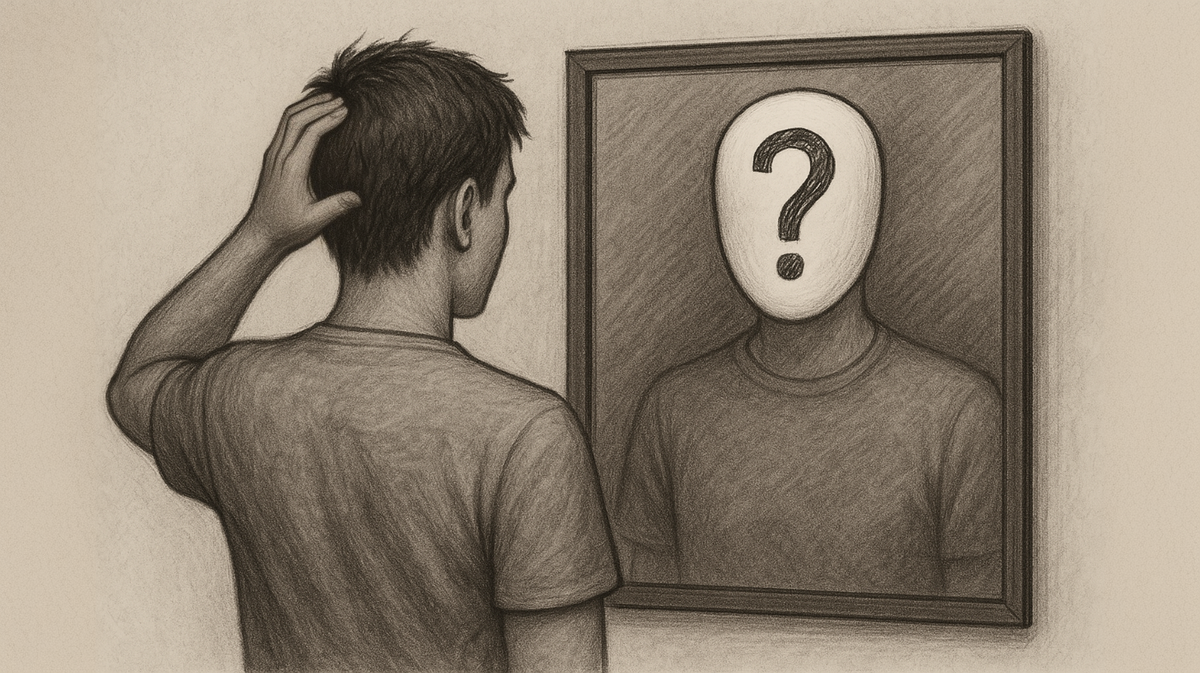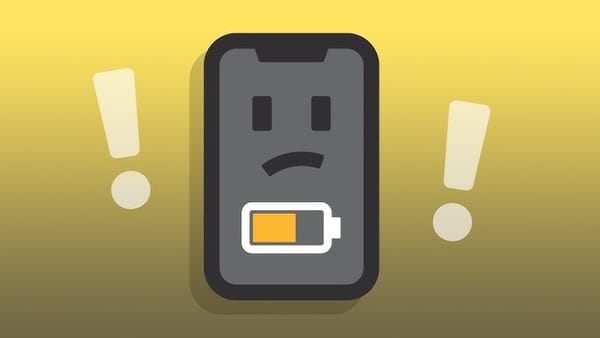Imposter Syndrome: Debugging Self-Doubt
Imposter syndrome isn’t just a feeling it’s a pattern. This article breaks down where it comes from, how it shows up, and why it fades with growth.

You’re likely reading this from one of three vantage points:
• You’ve felt it. Frequently. It gnaws at your wins and sours your momentum.
• You’ve never had a name for it, but you’ve felt the symptoms, a quiet disbelief in your competence.
• Or you’ve never experienced it at all, and the entire concept sounds like a strange affliction others exaggerate.
Table of Contents:
· Symptoms & Onset: How Imposter Syndrome Begins
· The Trigger Phase: Where the Syndrome Begins
· The Loop Phase: Doubt on Repeat
· Remedies: What Others Have Tried When Doubt Refuses to Leave
∘ 1. Repetition: Accumulate Proof Until the Doubt Breaks
∘ 2. Social Proof: Test It Against Reality
∘ 3. Difficulty Adjustment: Maybe It Was Just Too Easy
· Conclusion
Imposter syndrome isn’t just insecurity. It’s a cognitive malfunction, a dissonance between your ability and your belief about that ability. And like any malfunction, it follows a pattern.
This article breaks that pattern down.
What causes it, how it manifests, and why it lingers or fades.
Whether you’re trying to name it, understand it, or outgrow it, this article breaks imposter syndrome down in clear terms, structured for depth, and written for clarity.
Symptoms & Onset: How Imposter Syndrome Begins
Imposter syndrome rarely appears in the absence of success.
It tends to arrive at the exact moment you should feel proud.
It often shows up after hitting a milestone, landing a job, releasing a project, achieving a personal best, and instead of satisfaction, you’re met with a sinking sense of fraudulence.
It doesn’t matter how clear the proof is.
Something inside insists the success was either a fluke, a product of luck, or simply too easy to count.
Technical Framing:
This is a cognitive rejection of legitimate achievement. The brain, when confronted with a result that challenges its self-image, triggers internal skepticism despite the presence of sufficient external validation. This creates an emotional dissonance a gap between fact and belief where the individual remains unconvinced of their own credibility.
Layman’s Interpretation:
You did something great. Really great. But instead of celebrating, you’re thinking, “That wasn’t me,” or “Anyone could’ve done that.” Even when there’s metrics, feedback, or tangible proof something just doesn’t click. It feels like you’re playing a role you haven’t earned.
This happens most often when you’ve just done something your previous self once thought was impossible.
The catch-up hasn’t happened yet; the old you from before still hasn’t accepted that the new you is real.
The Trigger Phase: Where the Syndrome Begins
Imposter syndrome isn’t born in failure, it’s often sparked by success. But not just any success, the kind that feels suspiciously out of reach from your former self.
It’s the aftermath of accomplishing something you once deemed impossible, and instead of feeling pride, you’re hit with a strange sense of detachment.
It’s not just that you did it. It’s how you did it.
Technical Framing:
The trigger phase typically emerges after a significant personal or professional leap. It tends to affect individuals with a prior history of self-doubt, perfectionism, or identity instability. When the individual achieves a goal they once believed to be out of reach either through sustained effort, rapid transformation, or external validation their internal narrative fails to update at the same pace. This lag between identity and reality generates psychological dissonance, resulting in the sensation of fraudulence or role-playing.
Common triggering profiles include:
- Rapid transformation (career, physical, emotional)
- “Fake it till you make it” strategies that eventually succeed
- Achievements that feel disproportionately easy relative to their perceived difficulty
- Reaching a long-term goal set by a previous version of the self
Layman’s Interpretation:
You used to think doing this thing was out of your league. Then one day, you did it. And not only did you pull it off, it didn’t even feel as hard as you imagined. It takes place right after the major win.
You did the thing, hit the goal, the leap you thought would take years, and instead of pride, there’s this strange pause. Not emptiness exactly. More like confusion. A disbelief that it’s already over.
You start to question things, you become skeptical of the entire process:
- Did I overestimate how hard this was supposed to be?
- Did I skip a step?
- Did I cut a corner without realizing it?
- Was that really it?
The doubt isn’t about your effort, it’s about whether the effort matched the outcome. Especially if you’ve been “faking” confidence to get there, the idea that “you made it” feels suspicious. Not because you didn’t try, but because some part of you still thinks you’re catching up.
And in that gap between what you thought it would take and how it happened, the syndrome gets comfortable.
The Loop Phase: Doubt on Repeat
The loop isn’t a necessary chapter in impostor syndrome. It’s what happens when you get stuck refreshing the same emotional browser tab. The brain keeps asking a question it already has the answer to: “Did I really do this?” over and over again, ignoring the mounting evidence that says yes.
We include this phase not because it always happens, but because it reveals the contradiction at the heart of the syndrome: the more you accomplish, the more absurd the doubt becomes.
Technical Framing:
The loop phase is a repetitive cycle of internal regression. It’s characterized by continued skepticism despite growing empirical proof of one’s abilities. In this phase, the individual’s cognitive schema resists updating, often due to emotional inertia or entrenched beliefs about identity. The paradox is that each new success re-triggers the same pattern of doubt, creating an unsustainable narrative conflict: one where consistent results are met with inconsistent self-perception.
Psychologically, this is a form of dissonance-induced denial. The identity can no longer reconcile with the reality, so it defaults to the safety of disbelief even when that disbelief no longer makes sense.
Layman’s Interpretation:
This is when things stop making sense even to you.
If every outcome says yes and you still ask if you belong, it’s not humility, it’s lag. Your brain just hasn’t accepted the new normal.
How can you keep doubting something that keeps happening?
At a certain point, the repetition undermines the doubt. It’s no longer about whether you’re capable; it’s about why you’re still trying to convince yourself you’re not.
And that’s the loop: a contradiction looking for loopholes. But there are none left.
Remedies: What Others Have Tried When Doubt Refuses to Leave
Symptoms of imposter syndrome might include recurring disbelief in your own success, the inability to internalize accomplishments, or the feeling that you’ve somehow tricked others into overestimating you. But once it’s identified, the question becomes, how do people learn to live with it, or move beyond it?
Below are three non-prescriptive strategies.
No guarantees, no promises.
Just methods that have worked or at least helped make sense of the noise.
1. Repetition: Accumulate Proof Until the Doubt Breaks
Technical:
The first approach involves raw volume. When imposter syndrome stems from a perceived lack of legitimacy, repeating the action that caused the doubt, especially at increasing levels of difficulty, eventually creates a statistical wall of evidence. Over time, the internal narrative becomes harder to maintain when every new data point contradicts it.
In other words:
You don’t keep winning by accident. If it keeps happening, the doubt becomes the outlier, not the success.
It becomes a pattern.
And patterns are harder to deny.
You might still feel the doubt between wins, but the more undeniable the streak becomes, the more obvious it is: that voice in your head just doesn’t want to catch up.
2. Social Proof: Test It Against Reality
Technical:
Another method is benchmarking, placing your output in proximity to credible external examples. If self-assessment is warped, aligning with objective standards or peer comparisons can recalibrate internal judgment. This isn’t about envy or ego; it’s about alignment.
In other words:
The first time someone you admire calls your work sharp, you don’t believe them. The second time, you think they’re being polite.
By the third time, the voice of doubt in your head starts sounding a little desperate. You’re not imagining it, you’re just measuring wrong.
3. Difficulty Adjustment: Maybe It Was Just Too Easy
Technical:
In some cases, the syndrome arises not because the task was difficult, but because it wasn’t. When the challenge feels too light, the mind questions the legitimacy of the outcome. The fix isn’t to diminish the result, but to increase the ceiling, pursue harder goals where your belief and effort finally align.
In other words:
It’s possible you are an imposter, but not the kind you think.
Not a fraud, just someone who didn’t realize they were good at something until it came too easily.
If it felt smooth, maybe that’s not a red flag.
Maybe you just underestimated yourself.
So raise the bar. If the doubt still follows, maybe you’re gifted.
And if you didn’t know that, if you spent all this time thinking you were bad at something that turns out to be your thing, then yeah, maybe you are an imposter.
You just had no idea you were built for this.
Conclusion
Imposter syndrome is a difficult thing to name, let alone navigate. But the truth is, if you’re feeling it, there’s a good chance it’s because you’ve evolved from the underdog to someone bordering on exceptional.
You’re moving faster than your mind can track, and your self-image is lagging behind the reality you’ve built.
In that sense, maybe you are an imposter, but only because you’ve outgrown who you used to be.
Give it time. Stay persistent.
Keep doing the work that got you here. Eventually, the evidence will speak louder than the doubt.
Keep going until your success is unquestionable.
This piece was an experiment in clarity; each idea was presented both in its raw, technical form and then mirrored through a more creative, human lens.
At times, I'm sure it got quite annoying, but it served its purpose: no ambiguity left on the table. Whether you speak the language of logic or emotion, you should’ve found yourself in here somewhere.
If you didn’t? Read it again in a few years maybe by then you’ll finally have gotten the message.



